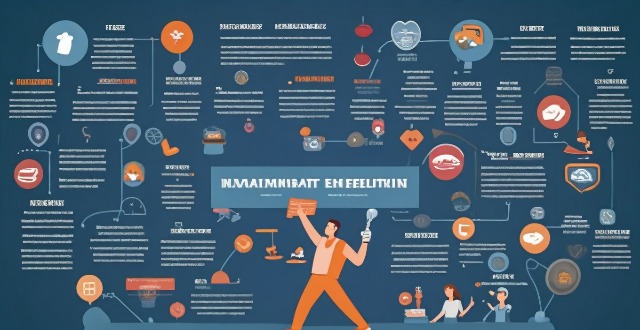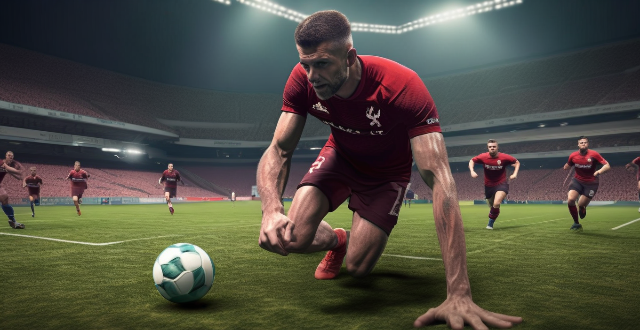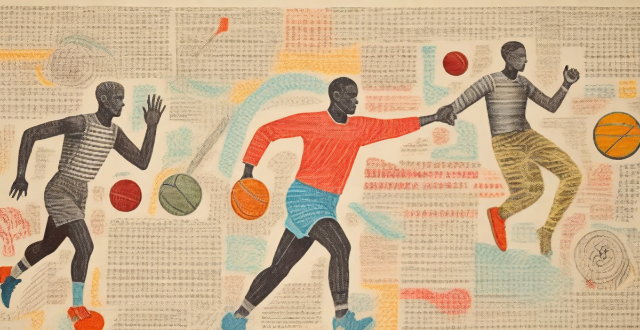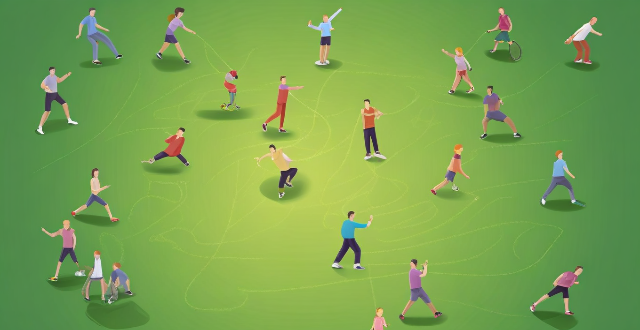Sports Gaming

How can sports and physical activities help prevent internet gaming addiction ?
Sports and physical activities can help prevent internet gaming addiction by offering alternative forms of entertainment, promoting mental and physical well-being, and fostering social connections. Strategies for incorporating sports include setting fitness goals, choosing enjoyable activities, and involving family or friends to make it a sustainable part of one's lifestyle.

How does engaging in sports impact the likelihood of developing a gaming disorder ?
Engaging in sports can significantly reduce the likelihood of developing a gaming disorder by improving mood and mental health, enhancing sleep quality, increasing socialization, promoting peer pressure and influence, limiting availability for gaming, and fostering a goal-oriented mindset. Maintaining a balanced lifestyle with various activities beyond gaming is essential for overall well-being and preventing potential addictions.

How can schools incorporate sports programs to combat gaming addiction among students ?
Schools can combat gaming addiction among students by incorporating sports programs, promoting physical activity, and mental well-being. Strategies include promoting sports programs, offering a variety of sports, integrating sports into the curriculum, organizing sports events, providing access to facilities and equipment, encouraging participation in extracurricular sports clubs, educating students about the benefits of sports, and collaborating with parents and community organizations.

What role does team sports play in mitigating the risks associated with compulsive gaming ?
Team sports can mitigate the risks associated with compulsive gaming by encouraging healthy social interactions, increasing physical activity, developing time management skills, and reducing stress and anxiety.

Are there specific types of sports that are more effective in preventing internet gaming addiction ?
The article discusses the issue of internet gaming addiction and how sports can be an effective solution. It explains the benefits of physical activity, including improved health and social connections, which can help prevent addiction. The article then lists four types of sports that are particularly effective in preventing addiction: outdoor adventure sports, team sports, individual sports with goals, and yoga/mindfulness practices. Overall, the article emphasizes the importance of engaging in physical activities to promote a healthy lifestyle and combat addiction.

Is there a correlation between the amount of time spent on sports and the incidence of gaming addiction ?
The text discusses the potential correlation between gaming addiction and excessive time spent on sports, considering displacement theory, common underlying factors, lack of social support, and cultural influences. It highlights the need for further research to understand this relationship better and develop prevention and treatment strategies for both conditions.

Can regular exercise be an effective way to prevent excessive online gaming ?
Regular exercise can help prevent excessive online gaming by improving mental health, increasing self-control, enhancing social interaction, and improving sleep quality. While it may not completely eliminate gaming behaviors, it serves as a valuable tool in promoting overall well-being and reducing reliance on online gaming as a primary source of entertainment and social interaction.

How does network latency affect online gaming ?
Network latency, or "lag," is the delay in data transmission between a player's device and the gaming server. This delay can significantly impact online gaming by affecting gameplay smoothness, multiplayer interaction, game design, and user experience. High latency can cause input delay, movement jitter, synchronization issues, communication delays, and disconnections, making games frustrating and unplayable. In contrast, low latency offers responsive controls, smooth movement, fair play, effective communication, and an immersive experience. Game developers use optimization strategies like client-side prediction and server-side interpolation to minimize latency's effects. Managing network latency is crucial for maintaining a high-quality online gaming environment.

Is it better to use a wired or wireless connection for gaming consoles ?
When it comes to gaming consoles, the choice between a wired and wireless connection can significantly impact your gaming experience. Wired connections typically offer faster speeds, lower latency, and more stable connections but limit mobility and can create a cluttered setup. Wireless connections allow for increased mobility and a cleaner setup but may have slower speeds, higher latency, and potential interference from other devices. The choice between a wired and wireless connection depends on your specific needs and preferences, such as the type of games you play and the layout of your home.

What is the future of e-sports and its integration with technology ?
E-sports, or electronic sports, have seen a meteoric rise in popularity over the past decade. As technology continues to evolve at a rapid pace, the future of e-sports looks brighter than ever before. In this article, we will explore the potential integration of e-sports with technology and what it means for the future of competitive gaming.

What are the benefits of participating in sports to reduce the risk of video game addiction ?
Participating in sports can have numerous benefits for individuals who are at risk of developing a video game addiction. These include increased physical activity, social interaction, time management, mental health benefits, and the development of life skills. By engaging in sports, individuals can find a healthy balance between gaming and other activities, leading to a more fulfilling and well-rounded lifestyle.

What are some innovative ways that technology is being used in sports ?
Technology has significantly transformed various aspects of sports, including training methods, fan engagement, and game strategies. Key areas where technology is making a notable impact include virtual and augmented reality for both training and enhancing the fan experience, wearable technology for performance tracking and injury prevention, advanced analytics in player performance analysis and game strategy, video technology like instant replay and drone cameras for improved officiating and viewing experiences, eSports and gaming for interactive experiences and training simulations, social media and digital engagement for athlete interaction and live streaming, artificial intelligence in generating match highlights and aiding injury rehabilitation, and the Internet of Things in creating smart stadiums and monitoring equipment maintenance. These advancements not only improve performance but also enrich the overall sports experience for everyone involved.

Will upgrading my broadband improve my online gaming experience ?
Upgrading broadband can enhance online gaming by reducing latency and increasing speeds, stability, and bandwidth, leading to smoother gameplay and fewer disruptions. However, it is important to consider costs, hardware compatibility, provider options, and potential trial periods before deciding on an upgrade.

In what ways have advancements in technology facilitated the globalization of sports ?
Globalization of Sports through Technological Advancements Introduction: - Technology has played a crucial role in making sports a universal language, connecting fans and athletes across the globe, and enhancing the overall experience of sporting events. 1. Improved Communication and Connectivity: - Fans can access information about their favorite sports and teams instantly through smartphones, tablets, and laptops. - Social media platforms have revolutionized the way fans interact with each other and their favorite athletes. 2. Advanced Broadcasting Technology: - Live streaming services and high-definition television broadcasts provide an immersive viewing experience for millions of people worldwide. - Virtual reality (VR) and augmented reality (AR) technologies are transforming the way fans experience sports. 3. Enhanced Training Methods: - Data analytics tools enable coaches and trainers to track an athlete's performance metrics and create personalized training programs. - Virtual reality training simulations offer athletes a safe and controlled environment to practice and refine their skills without the risk of injury. 4. Increased Accessibility and Inclusivity: - Technology has played a crucial role in making sports more accessible and inclusive for people with disabilities through advancements in wheelchair design and materials. - The rise of online gaming and esports has created new opportunities for people to participate in competitive activities regardless of their physical abilities or location. Conclusion: - Advancements in technology have transformed the way we experience and participate in sports, making it a global phenomenon that unites people through shared interests and passions.

What is the impact of e-sports on the entertainment industry ?
E-sports, also known as electronic sports, have become a significant force in the entertainment industry over the past decade. The growth of e-sports has had a profound impact on various aspects of the entertainment sector, including media consumption, advertising, sponsorships, and even traditional sports. In this article, we will explore the different ways e-sports have influenced the entertainment industry. One of the most noticeable effects of e-sports on the entertainment industry is the increased media consumption. With the rise of streaming platforms like Twitch and YouTube Gaming, more people are watching e-sports events than ever before. This has led to a surge in viewership numbers for major e-sports competitions, with some events drawing audiences that rival those of traditional sports. The popularity of live streaming has played a crucial role in the growth of e-sports. Platforms like Twitch allow fans to watch their favorite players and teams compete in real-time, creating an interactive experience that goes beyond simply watching a game. This has not only increased the overall viewership but also provided opportunities for advertisers and sponsors to reach a highly engaged audience. As e-sports continue to gain momentum, so does the number of content creators who specialize in covering the latest news, highlights, and analysis related to the industry. These creators generate a vast amount of content across various social media platforms, further driving engagement and expanding the reach of e-sports within the entertainment landscape. The booming e-sports industry has attracted numerous advertisers and sponsors looking to tap into its growing fanbase. Brands ranging from energy drinks to computer hardware companies have invested heavily in e-sports, sponsoring tournaments, teams, and individual players. Many high-profile e-sports events now feature prominent sponsorship logos and brand integrations throughout their broadcasts. These partnerships not only provide financial support for the organizations hosting these events but also offer valuable exposure for the sponsoring brands. Top e-sports players and teams have secured lucrative endorsement deals with major brands, similar to those seen in traditional sports. These deals often include personal appearances, social media promotions, and exclusive product collaborations, further blurring the lines between e-sports and mainstream entertainment. E-sports' rapid growth has prompted many traditional sports organizations to take notice and adapt accordingly. Several professional sports leagues, such as the NBA and NFL, have launched their own e-sports initiatives or partnered with existing e-sports organizations to expand their reach among younger audiences. There has been a notable crossover between e-sports professionals and traditional athletes, with some former athletes transitioning into e-sports careers or investing in e-sports teams. Additionally, traditional sports stars have participated in e-sports events or collaborated with e-sports personalities, showcasing the increasing interconnectedness of these two worlds. Recognizing the potential of e-sports, several major sports organizations have made substantial investments in the space. This includes everything from forming dedicated e-sports divisions within their organizations to acquiring stakes in existing e-sports teams or leagues. These moves underscore the belief that e-sports represent a viable long-term investment opportunity within the broader entertainment industry. E-sports' impact on the entertainment industry is undeniable, as it continues to shape how we consume media, engage with brands, and interact with both emerging and established forms of entertainment. As e-sports continue to grow and evolve, they will undoubtedly play an increasingly central role in shaping the future of the global entertainment landscape.

How has the relationship between sports and art evolved over time ?
The relationship between sports and art has evolved over time, reflecting societal shifts in values, technology, and cultural practices. In ancient civilizations, sports and art were often intertwined, serving both practical and aesthetic purposes. The Middle Ages saw a separation between the two due to religious influences, but by the Renaissance, there was a renewed interest in classical ideals that brought them closer again. Modern times led to specialization and convergence in areas such as advertising, while contemporary advancements in technology have allowed for unprecedented integration of sports and art through digital platforms and global spectacles.

What is the future of eSports and its integration with traditional sports ?
The future of eSports is bright, and its integration with traditional sports is expected to become more prominent in the coming years. The popularity of eSports is growing, with increased viewership, rising investments, and professionalization of athletes. Traditional sports organizations are partnering with eSports companies, incorporating eSports into their events, and sponsoring eSports teams. eSports is also being included in mainstream media, with broadcasting rights acquired by television networks and coverage in sports media outlets. However, challenges such as regulation, health concerns, and mainstream acceptance still need to be addressed. Opportunities include technological advancements, a global audience, and diversification of sports. As eSports and traditional sports continue to evolve, we can expect more collaborations, crossover events, and shared opportunities that will benefit all stakeholders.

How does the globalization of sports media affect fan engagement and consumption patterns ?
The globalization of sports media has significantly impacted fan engagement and consumption patterns. Enhanced accessibility through live streaming, on-demand content, and digital platforms has revolutionized how fans watch and interact with sports. Diverse content offerings, including international coverage and multilingual broadcasts, have expanded the reach of sports to global audiences. Personalized experiences through customized content and fantasy sports have increased fan engagement. Additionally, virtual events, e-sports, and online tournaments provide new opportunities for fans to participate and engage. Changes in consumption patterns, such as a shift towards digital subscription models and online merchandise shopping, reflect the evolving landscape of sports media. Overall, the globalization of sports media has transformed the way fans consume and enjoy sports worldwide.

How are virtual reality and augmented reality changing the way we experience entertainment ?
Virtual reality and augmented reality technologies are revolutionizing entertainment by offering immersive, interactive, and personalized experiences. They have impacted various domains of entertainment, including gaming, movies, sports, and music. VR headsets provide an immersive gaming experience, while AR games bring gaming into the real world. VR cinema offers an immersive movie-watching experience, and AR applications enhance the viewing experience by adding virtual elements to the real world. Sports fans can enjoy a more immersive experience with VR platforms and AR applications that display real-time statistics and replays. Virtual concerts and AR-enhanced performances offer unique and personalized music experiences. Overall, these technologies make entertainment more engaging and enjoyable than ever before.

What are the most popular items to buy on Black Friday ?
Black Friday is a shopping holiday known for its significant discounts on various products. The most popular items to buy on this day include electronics like TVs, laptops, smartphones, and gaming consoles; home appliances such as kitchen appliances, large appliances, and vacuum cleaners; clothing and accessories from fashion brands, shoes, and jewelry; toys and games including Lego sets, board games, and video games; and sports and fitness equipment like other sports gear and fitness trackers. It's important to be strategic in what you buy and look out for early bird specials and doorbuster deals to save even more money.

What are the latest trends in the entertainment industry ?
The entertainment industry is constantly evolving, with new trends emerging every year. Some of the latest trends include streaming services, virtual reality and augmented reality technologies, e-sports and live streaming, interactive content, and diversity and inclusion. Streaming services like Netflix and Hulu are becoming more popular as people cut the cord on cable subscriptions. Virtual reality and augmented reality technologies are being explored for use in gaming, movies, concerts, and live events. E-sports has become a major trend with millions of people tuning in to watch professional gamers compete. Interactive content creates a more engaging experience for audiences by allowing them to influence the outcome of a show or movie. Diversity and inclusion are also becoming increasingly important in the entertainment industry as studios and networks work to create more diverse casts and stories that reflect different cultures and perspectives.

What are some popular items currently on sale ?
Popular items currently on sale include TVs, smartphonesPopular items currently on sale include TVs, smartphones consoles, kitchen appliances, smartphones, laptops, gaming consoles, kitchen appliances, cleaning devices, large appliances, clothing, handbags, shoes, jewelry, sports gear, camping gear, outdoor activities, educational toys, building sets, board games, and puzzles.

In what ways do physical activities promote mental health and deter video game dependency ?
This topic summary delves into the intricate relationship between physical activities, mental health, and video game dependency. It emphasizes the role of physical activities in promoting mental well-being by boosting mood, enhancing cognitive functions, and providing social interaction. Conversely, it highlights how these activities can deter video game dependency by offering alternative forms of entertainment, setting boundaries for gaming time, and fulfilling achievement needs. The text underscores the importance of maintaining a balance between digital leisure and physical activities for overall mental health and well-being.

How has technology influenced the design of sports fashion ?
Technology has significantly influenced sports fashion design, introducing advanced materials, digital printing techniques, smart wearables, and increased customization options. These innovations have enhanced the functionality, comfort, and style of sports apparel, catering to individual preferences and needs.

What are some common hobbies and interests of celebrities ?
Celebrities, just like regular people, have their own hobbies and interests that help them relax, unwind, and express themselves outside of their professional lives. These activities range from music, sports, art and design, traveling, reading and writing, cooking and baking, philanthropy and volunteering, gaming, fashion and beauty, to gardening and outdoor activities. By engaging in these hobbies, celebrities can escape the pressures of fame and find joy in everyday life.

How does sports sponsorship impact the grassroots level of sports and sports development programs ?
Sports sponsorship has a significant impact on grassroots sports and sports development programs by providing financial support, resources, and exposure. Sponsorship money can be used to fund equipment, facilities, coaching, and other essential resources required for the smooth functioning of these programs. Additionally, sponsors often provide high-quality equipment, improve sports facilities, fund professional coaching, and invest in marketing and promotional activities. Sports sponsorship also provides valuable exposure opportunities for grassroots sports and sports development programs, helping them gain recognition, credibility, and attract more participants, fans, and sponsors. Overall, sports sponsorship plays a crucial role in promoting sports participation and contributing to the overall development of athletes and the sport itself.

How does sports medicine help prevent injuries in sports ?
The text discusses how sports medicine helps in preventing injuries in sports by providing athletes with necessary knowledge, skills, and resources for maintaining their health and safety. It outlines key ways such as pre-participation physical examinations, proper warm-ups, strength training programs, correct technique, injury management, and education. These measures aim to identify risks, prepare the body for exercise, enhance fitness levels, promote safe practices, and manage injuries effectively. Overall, sports medicine plays a vital role in fostering a culture of safety and well-being within sports communities.

What is the impact of sports movies on the sports industry ?
Sports movies have a significant impact on the sports industry by inspiring and motivating people, promoting healthy lifestyles, generating interest in different sports, and providing marketing and branding opportunities. These movies can encourage people to pursue their dreams, work hard, and never give up, as well as highlight the importance of physical fitness and healthy living. Additionally, sports movies can generate interest in less popular or well-known sports and provide excellent marketing and branding opportunities for companies involved in the sports industry. Overall, sports movies play an essential role in shaping public perception and attitudes towards sports and physical activity.

What are the most popular holiday gifts for children this year ?
The holiday season is upon us, and parents are scrambling to find the perfect gifts for their little ones. With so many options available, it can be overwhelming to decide which toys will be the most popular this year. Here are some of the top holiday gifts for children in 2023: Technology & Gadgets: Interactive Toys like FurReal Friends Torch, My Blazin' Dragon and Fisher-Price Laugh & Learn Smart Stages Chair; Coding & STEM Toys such as Osmo Genius Kit for iPad and Lego Boost Creative Toolbox; Virtual Reality (VR) Headsets including Mattel View-Master VR and Oculus Quest 2. Classic Toys with a Twist: Board Games like Pie Face Can't Lose Party Game and Catan Junior; Building Sets such as K'NEX Thrill Seekers 75th Anniversary Roller Coaster Building Set and Magna-Tiles Clear Colors 100-Piece Set. Outdoor & Active Play: Other Outdoor Toys like Razer DeathAdder V2 Mini HyperSpeed Gaming Mouse and Nerf Ultra One Motorized Blaster; Sports Equipment including Franklin Sports Youth Volleyball Set and Little Tikes Easy Score Soccer Set.

How does team sports impact mental health compared to individual sports ?
This article explores how team sports impact mental health compared to individual sports. It highlights the social support and belongingness provided by team sports, which can reduce feelings of isolation and loneliness. The article also discusses how team sports promote accountability and responsibility, helping individuals develop discipline and self-control. Additionally, it emphasizes the importance of goal setting and achievement in team sports, which can boost self-esteem and confidence. Overall, the article concludes that team sports have a significant impact on mental health compared to individual sports due to their social aspect.